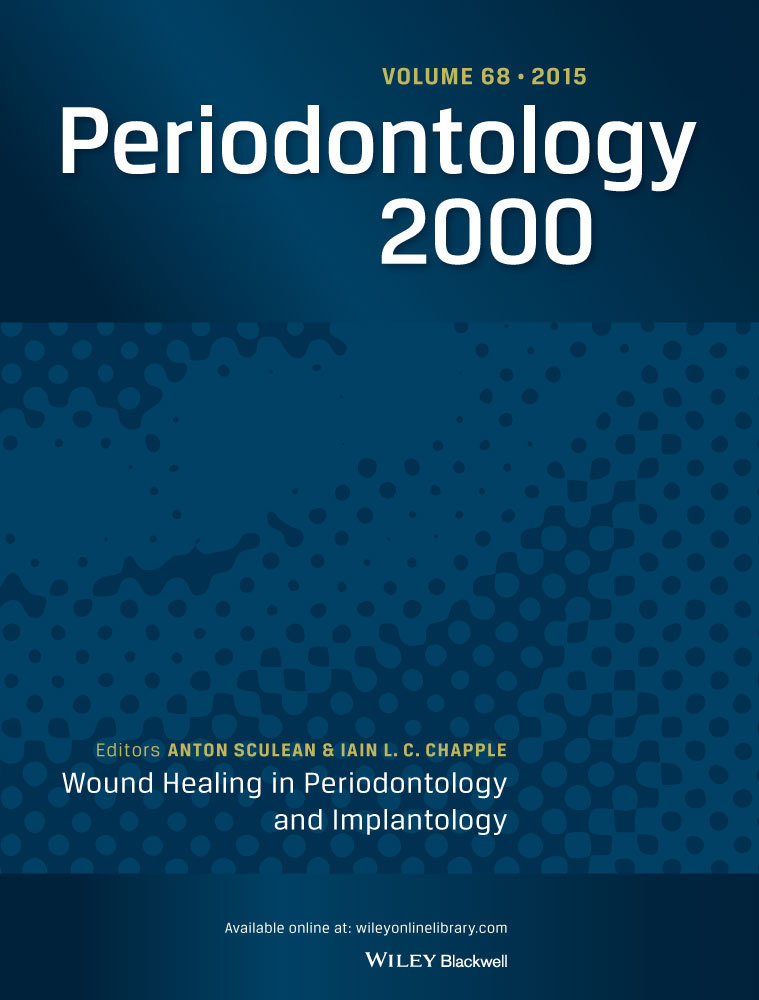牙周和种植体周围表型的三维数字定量分析-叙述综述
IF 15.7
1区 医学
Q1 DENTISTRY, ORAL SURGERY & MEDICINE
引用次数: 0
摘要
牙周和种植体周围组织的三维数字评估,包括CBCT、口腔内扫描、光学表面扫描和超声检查,正在越来越频繁地应用于临床领域。因此,为了验证用于此目的的3D数字分析的使用,有必要对数字方法相对于传统方法的可靠性进行批判性评估。因此,本综述的目的是对现有文献进行总结,讨论使用CBCT和口内扫描来评估牙周和种植体周围组织,强调3D数字方法与传统方法的优缺点。提供了当前可用硬件和软件的概要。最后,本文讨论了人工智能在评估牙周和种植体周围组织结构的数字技术未来发展中的意义。这篇综述为理解目前用于评估牙周和种植体周围表型的3D数字分析方法提供了基础。虽然目前的CBCT和口内扫描技术提供了与传统方法相当的精确定量测量,但3D数字临床数据的全部潜力并未受到损害。未来的发展需要我们如何在三维空间中概念化和分析牙周和种植体周围组织的关系,超越传统的评估方案。未来,人工智能和深度学习工具与这些全面的3D数据集的集成将使更精确的诊断和治疗结果评估成为可能,彻底改变我们评估牙周和种植体周围表型的方式。本文章由计算机程序翻译,如有差异,请以英文原文为准。
Three‐dimensional digital quantitative analysis of periodontal and peri‐implant phenotype—A narrative review
3D digital evaluation of the periodontal and peri‐implant tissue, including CBCT, intraoral scanning, optical surface scanning, and ultrasonography, is being used in the clinical arena with increasing frequency. Thus, to validate the utilization of 3D digital analysis for this purpose, a critical evaluation of the reliability of digital approaches relative to conventional methodologies is necessary. Therefore, the goal of the present review is to provide a summary of the existing literature addressing the use of CBCT and intraoral scanning to evaluate the periodontal and peri‐implant tissues, highlighting both the advantages and disadvantages of 3D digital methodologies versus conventional approaches. A synopsis of currently available hardware and software is provided. Finally, the review discusses the implications of artificial intelligence in the future development of digital technology for assessing the structures of the periodontal and peri‐implant tissue. This review provides a foundation for understanding current 3D digital analysis approaches for the evaluation of periodontal and peri‐implant phenotype. While current CBCT and intraoral scanning technologies provide accurate quantitative measurements comparable to conventional methods, the full potential of 3D digital clinical data has not been undermined. Future advancement requires a fundamental shift in how we conceptualize and analyze periodontal and peri‐implant tissue relationships in three‐dimensional space, moving beyond conventional evaluation protocols. Integration of artificial intelligence and deep learning tools with these comprehensive 3D datasets in the future will enable more precise diagnosis and treatment outcome assessment, revolutionizing how we evaluate periodontal and peri‐implant phenotypes.
求助全文
通过发布文献求助,成功后即可免费获取论文全文。
去求助
来源期刊

Periodontology 2000
医学-牙科与口腔外科
CiteScore
34.10
自引率
2.20%
发文量
62
审稿时长
>12 weeks
期刊介绍:
Periodontology 2000 is a series of monographs designed for periodontists and general practitioners interested in periodontics. The editorial board selects significant topics and distinguished scientists and clinicians for each monograph. Serving as a valuable supplement to existing periodontal journals, three monographs are published annually, contributing specialized insights to the field.
 求助内容:
求助内容: 应助结果提醒方式:
应助结果提醒方式:


